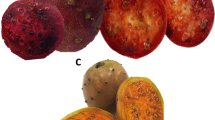Abstract
Objective
To investigate the anti-hyperlipidemic effects of apple polyphenols extract (APE) in Triton WR-1339-induced endogenous hyperlipidemic model.
Methods
Firstly, APE was isolated and purified from the pomace of Red Fuji Apple and contents of individual polyphenols in APE were determined using high-performance liquid chromatography-mass spectrometry (HPLC-MS). Secondly, forty male National Institude of Health (NIH) mice were randomly divided into 5 groups with 8 animals in each group. The Fenofibrate Capsules (FC) group and APE groups received oral administration of respective drugs for 7 consecutive days. All mice except those in the normal group were intravenously injected through tail vein with Triton WR-1339 on the 6th day. Serum and livers from all the mice were obtained 18 h after the injection. The changes in serum total cholesterol (TC), triglyceride (TG), lipoprotein lipase (LPL) and hepatic triglyceride lipase (HTGL) were measured by respective kits. Finally, expression of hepatic peroxisome proliferator-activated receptor alpha (PPARα) mRNA was measured by real-time reverse transcription-polymerase chain reaction (RT-PCR) method.
Results Serum TC and TG levels significantly increased in Triton WR-1339-induced model group compared with the normal group (P<0.01). Oral administration of APE [200 and 400 mg/(kg day)] dose-dependently reduced the serum level of TG in hyperlipidemic mice (P<0.01). Serum LPL and HTGL activities significantly decreased in Triton WR-1339-induced model group compared with the normal group (P<0.05). Oral administration of APE [200 and 400 mg/(kg day)] dose-dependently elevated the serum activity of LPL in hyperlipidemic mice (P<0.05 or P<0.01). Furthermore, compared with the normal group, hepatic mRNA level of PPARα in the model group significantly decreased (P<0.01). Oral administration of APE [200 and 400 mg/(kg day)] dose-dependently elevated the expression of PPARα in hyperlipidemic mice (P<0.05 or P<0.01)
Conclusion
APE could reduce TG level via up-regulation of LPL activity, which provides new evidence to elucidate the anti-hyperlipidemic effects of APE.
Similar content being viewed by others
References
Yang DJ, Chang YY, Hsu CL, Liu CW, Wang Y, Chen YC. Protective effect of a litchi (Litchi chinensis Sonn.)-flowerwater-extract on cardiovascular health in a high-fat/cholesteroldietary hamsters. Food Chem 2010;119:1457–1464.
Yang JY, Li Y, Wang F, Wu CF. Hepatoprotective effects of apple polyphenols on CCl4-induced acute liver damage in mice. J Agric Food Chem 2010;58:6525–6531.
Shoji T, Akazome Y, Kanda T, Ikeda M. The toxicology and safety of apple polyphenol extract. Food Chem Toxicol 2004;42:959–967.
Akiyama H, Sakushima J, Taniuchi S, Kanda T, Yanagida A, Kojima T, et al. Antiallergic effect of apple polyphenols on the allergic model mouse. Biol Pharm Bull 2000;23:1370–1373.
Yanagida A, Kanda T, Tanabe M, Matsudaira F, Oliveira Cordeiro JG. Inhibitory effects of apple polyphenols and related compounds on carcinogenic factors of mutans streptococci. J Agric Food Chem 2000;48:5666–5671.
Lee KW, Kim YJ, Kim DO, Lee HJ, Lee CY. Major phenolics in apple and their contribution to the total antioxidant capacity. J Agric Food Chem 2003;51:6516–6520.
Jan O, Michaz W, Aneta W, Iwona W. Influence of apple puree preparation and storage on polyphenol contents and antioxidant activity. Food Chem 2008;107:1473–1484.
Osada K, Suzuki T, Kawakami Y, Senda M, Kasai A, Sami M, et al. Dose-dependent hypocholesterolemic actions of dietary apple polyphenol in rats fed cholesterol. Lipids 2006;41:133–139.
Lam CK, Zhang Z, Yu H, Tsang SY, Huang Y, Chen ZY. Apple polyphenols inhibit plasma CETP activity and reduce the ratio of non-HDL to HDL cholesterol. Mol Nutr Food Res 2008;52:950–958.
Sugiyama H, Akazome Y, Shoji T, Yamaguchi A, Yasue M, Kanda T, et al. Oligomeric procyanidins in apple polyphenol are main active components for inhibition of pancreatic lipase and triglyceride absorption. J Agric Food Chem 2007;55:4604–4609.
Borensztajn J, Rone MS, Kotlar TJ. The Inbibition in vivo of lipoprotein lipase (clearing-factor lipase) activity by Triton WR-1339. Biochem J 1976;156:539–543.
He RR, Wang M, Wang CZ, Chen BT, Lu CN, Yao XS, et al. Protective effect of apple polyphenols against stressprovoked influenza viral infection in restraint mice. J Agric Food Chem 2011;59:3730–3737.
Oh PS, Lim KT. Glycoprotein (90 kDa) Isolated from Opuntia ficus-indica var. saboten MAKINO lowers plasma lipid level through scavenging of intracellular radicals in Triton WR-1339-induced mice. Biol Pharm Bull 2006;29:1391–1396.
Harnafi H, Caid HS, Bouanani NH, Aziz M, Amrani S. Hypolipemic activity of polyphenol-rich extracts from Ocimum basilicum in Triton WR-1339-induced hyperlipidemic mice. Food Chem 2008;108:205–212.
Oh PS, Lee SJ, Lim KT. Hypolipidemic and antioxidative effects of the plant glycoprotein (36 kDa) from Rhus verniciflua stokes fruit in Triton WR-1339-induced hyperlipidemic mice. Biosci Biotechnol Biochem 2006;70:447–456.
Gbaguidi FG, Chinetti G, Milosavljevic D, Teissier E, Chapman J, Olivecrona G, et al. Peroxisome proliferatoractivated receptor (PPAR) agonists decrease lipoprotein lipase secretion and glycated LDL uptake by human macrophages. FEBS Lett 2002;512:85–90.
Dallinga-Thie GM, Franssen R, Mooij HL, Visser ME, Hassing HC, Peelman F, et al. The metabolism of triglyceride-rich lipoproteins revisited: new players, new insight. Atherosclerosis 2010;211:1–8.
Staels B, Schoonjans K, Fruchart JC, Auwerx J. The effects of fibrates and thiazolidinediones on plasma triglyceride metabolism are mediated by distinct PPARs. Biochimie 1997;79:95–99.
Staels B, Dallongeville J, Auwerx J, Schoonjans K, Leitersdorf E, Fruchart JC. Mechanism of action of fibrates on lipid and lipoprotein metabolism. Circulation 1998;98:2088–2093.
Li SY, Chang CQ, Ma FY, Yu CL. Modulating effects of chlorogenic acid on lipids and glucose metabolism and expression of hepatic peroxisome proliferator-activated receptor-alpha in golden hamsters fed on high fat diet. Biomed Environ Sci 2009;22:122–129.
Author information
Authors and Affiliations
Rights and permissions
About this article
Cite this article
Yao, N., He, Rr., Zeng, Xh. et al. Hypotriglyceridemic effects of apple polyphenols extract via up-regulation of lipoprotein lipase in triton WR-1339-induced mice. Chin. J. Integr. Med. 20, 31–35 (2014). https://doi.org/10.1007/s11655-012-1243-3
Received:
Published:
Issue Date:
DOI: https://doi.org/10.1007/s11655-012-1243-3




